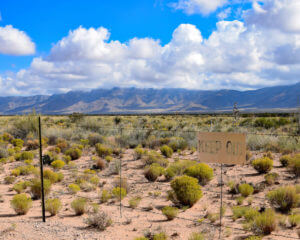
Over the past century, atmospheric nuclear tests have left a lasting mark on our planet. But why should we care about events that happened decades ago?
For many, the term “atmospheric nuclear testing” might seem like old news. However, the effects of these atmospheric nuclear tests are still felt today.
Let us explore how atmospheric nuclear testing has impacted our world and why it is crucial for everyone to understand its consequences.
What is Atmospheric Nuclear Testing?
Atmospheric nuclear testing involves detonating a nuclear weapon above ground. Unlike underground tests, these explosions occur in the open air, releasing radioactive material into the atmosphere.
Countries conducted these tests to develop and improve their nuclear weapons.
The History of Nuclear Testing
The first atmospheric nuclear test, known as Trinity, took place in New Mexico in 1945. This successful test paved the way for more tests, especially during the Cold War.
The United States, the Soviet Union, the United Kingdom, France, and China were the main countries conducting these atmospheric nuclear tests. Between 1945 and 1980, over 500 atmospheric nuclear tests were conducted globally.
Why Countries Conducted Nuclear Tests
Nations tested nuclear weapons to ensure their effectiveness and to showcase their power. During the Cold War, the United States and the Soviet Union wanted to demonstrate their military strength. Testing was also a way to develop new types of nuclear weapons.
The Immediate Effects of Nuclear Tests
When a nuclear bomb explodes, it releases a massive amount of energy. The explosion creates a bright flash, intense heat, and a powerful shockwave.
Immediately after the blast, radioactive particles are released into the atmosphere. These particles can travel long distances, depending on wind patterns.
Long-term Environmental Impact
When nuclear bombs are tested in the air, tiny radioactive particles are released. These particles eventually land on the ground and in lakes, rivers, and oceans, causing widespread pollution.
Radioactive materials like cesium-137 and strontium-90 can stay in the environment for many years, releasing harmful radiation. Plants can absorb these materials, which then enter the food chain. This means that animals that eat these plants, and even people who eat these animals, can be affected.
These radioactive substances can mess up natural processes, harm animals, and reduce the number of different species living in an area. For example, cesium-137 can take the place of potassium in animal bodies, affecting muscles and heart function. Strontium-90 acts like calcium and can build up in bones, potentially causing bone cancer and leukemia.
This pollution also makes water sources unsafe for drinking and farming. Over time, radioactive particles can build up in fish and other water creatures, leading to serious ecological problems and health risks for people who rely on these water bodies for food.
Impact on Human Health
Radioactive fallout from atmospheric nuclear tests has been linked to many serious health problems. Being around radiation for a long time can make it more likely to get cancer, like leukemia, thyroid cancer, and breast cancer.
There have also been reports of birth defects and other health issues in people exposed to radioactive materials. People living close to nuclear test sites were especially affected. These areas often had higher levels of radiation, leading to more chronic health problems.
Indigenous populations suffered some of the worst effects. They often lived closest to the test sites and weren’t told about the dangers of nuclear testing. Because they didn’t get enough information or protection, these communities were exposed to high levels of radiation without knowing how to protect themselves.
This has led to a lot of illness and suffering that continues to affect these communities for generations.
The Global Response
The dangerous effects of atmospheric nuclear tests made people all over the world very worried. In 1963, the United States, the Soviet Union, and the United Kingdom agreed to stop testing nuclear weapons in the air, underwater, and in outer space.
This agreement was called the Partial Test Ban Treaty. It was a big step forward, but it didn’t stop tests done underground.
The Legacy of Nuclear Testing
Even though testing nuclear weapons in the air stopped many years ago, the problems it caused are still here. The places where the atmospheric nuclear tests happened are still polluted, and people living nearby still have health issues.
It is important to learn from these mistakes to make sure it doesn’t happen again.
Atmospheric Nuclear Test Compensation for Downwinders
In the United States, the Radiation Exposure Compensation Act (RECA), created in 1990, helps people who were harmed by radiation. This law gives money, approximately $150,000 according to new proposed legislation, to those affected and their families, recognizing how serious radiation exposure can be.
If you think you or your family member is eligible for this compensation, contact us here at Downwinders®. We have a team of providers who are committed to helping individuals and families who have been impacted by cancers within the past 70 years while living in certain areas of the United States get the compensation they deserve.
To learn more about how we can help you file a claim, fill out our registration form. We look forward to serving you!
